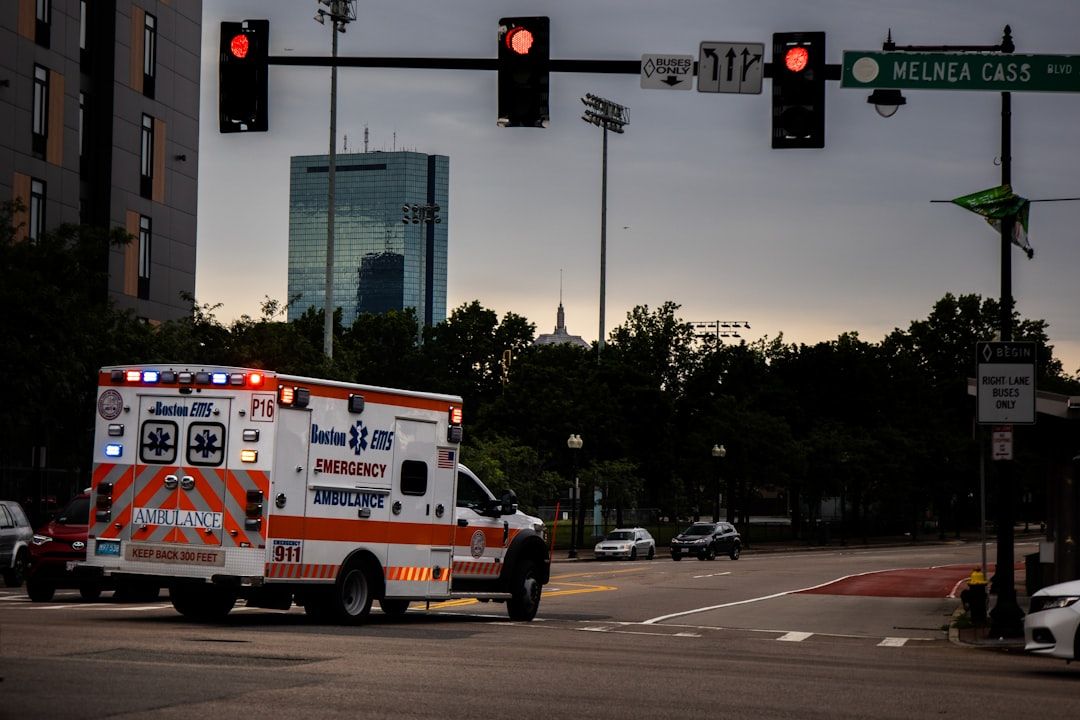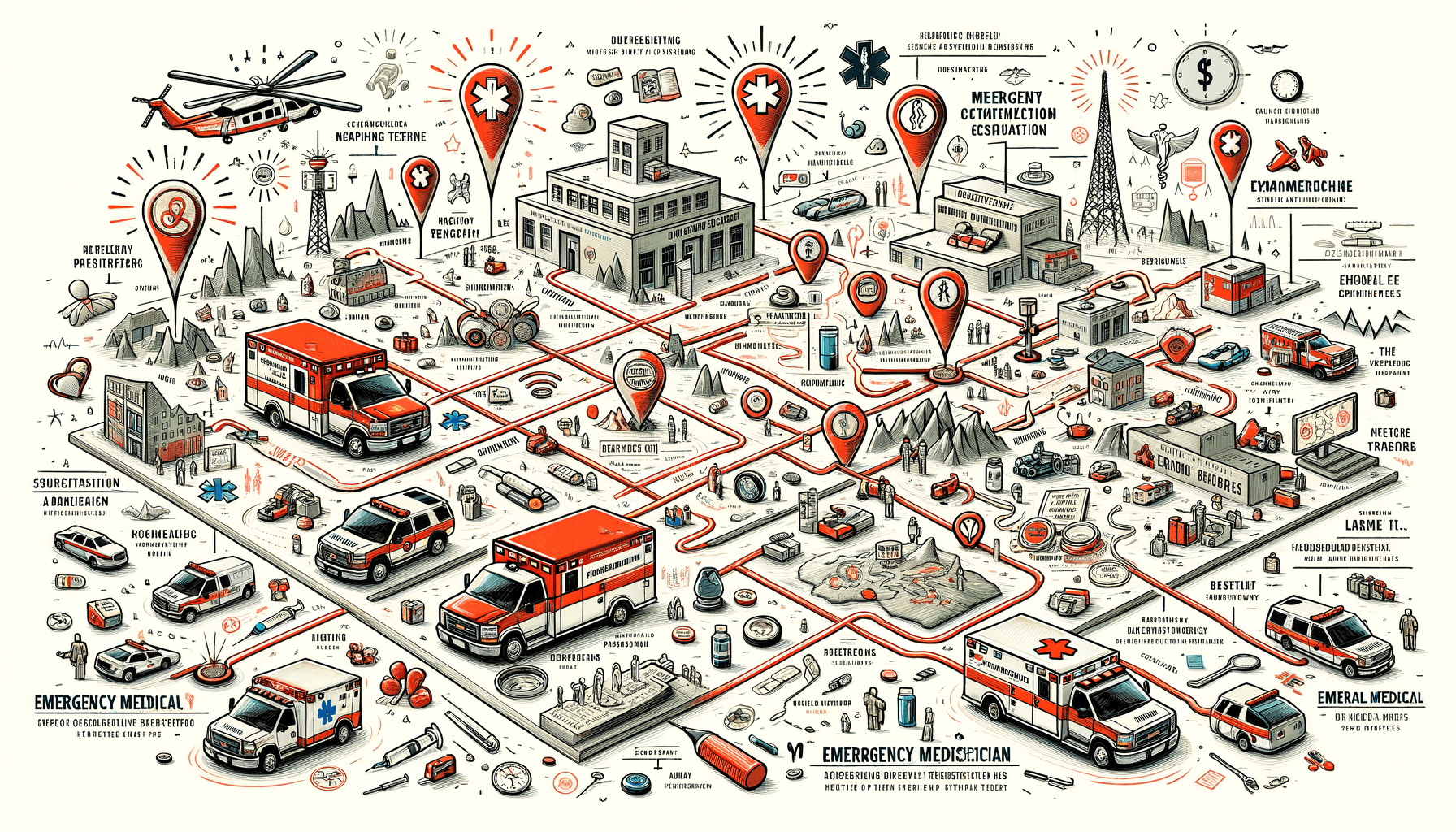
Embarking on a career as an EMT or Paramedic requires rigorous preparation, thorough training, and a deep commitment to saving lives in emergency medical situations. This guide is designed to provide prospective EMTs and Paramedics with essential information on the educational pathways, certification requirements, and the steps necessary to excel in this vital healthcare field. Whether you are just starting out or looking to advance from an EMT to a Paramedic, understanding the nuances of training, state licensure, and the national certification process is crucial.
Emergency Medical Technicians (EMTs) and Paramedics are on the front lines of medical emergencies, providing critical care when it's most needed. While both roles aim to deliver immediate life-saving interventions, they differ significantly in their scope of practice. EMTs manage basic emergency onsite care and transport, performing tasks such as CPR, bleeding control, and shock management. On the other hand, Paramedics are equipped with advanced medical training to administer medications, perform intubation, and interpret electrocardiograms (EKGs). This guide will delve into the educational requirements for each role, outline the certification processes, and discuss the practical experiences needed to become a proficient EMT or Paramedic.

In this introductory course, students learn the basic skills necessary for emergency medical care and transportation of the sick and injured. Key topics include patient assessment, handling emergencies, and basic life support techniques such as CPR. Emphasis is placed on responding to common medical and trauma-related emergencies.
Building on the foundations laid in EMT I, this course delves deeper into the pathophysiology of common medical emergencies. Students enhance their skills in managing respiratory, cardiac, and trauma emergencies. Advanced airway management techniques and patient assessment strategies are also covered.
This course introduces students to advanced medical terms and care procedures needed in the field of paramedicine. Topics include the interpretation of complex medical language and the application of this knowledge to the treatment of advanced-level medical conditions.
Focuses on the administration and understanding of medications commonly used in pre-hospital emergency care. Students learn about drug classifications, actions, therapeutic uses, and the management of side effects. This course is critical for safe and effective medication administration by paramedics.
Students learn to manage a wide range of medical emergencies including cardiovascular, neurological, endocrine, respiratory, and gastrointestinal crises. Emphasis is placed on rapid assessment, appropriate intervention, and ongoing management during transport.
This course covers advanced concepts in cardiac care, including electrocardiogram (ECG) interpretation, cardiac pharmacology, and management of acute coronary syndromes. Students participate in scenarios that simulate real-life cardiac emergencies to enhance decision-making skills.
Provides hands-on clinical experience in a variety of healthcare settings. Students apply their classroom knowledge to real-world situations under the supervision of experienced professionals, focusing on patient assessment and management.
An intensive field placement that pairs students with seasoned paramedics in emergency response units. This internship focuses on applying theoretical knowledge in high-pressure environments to treat patients effectively during medical emergencies.
Teaches students how to manage trauma cases, including those involving multiple casualties. Training covers scene assessment, stabilization techniques, triage protocols, and surgical interventions necessary for life-threatening injuries.
Examines patient care considerations for special populations such as pediatric, geriatric, and obstetric patients. The course also addresses psychological disorders and challenges associated with diverse patient demographics.
Students learn about the operational aspects of ambulance services including navigation, communication protocols, vehicle maintenance, and safety procedures during high-speed transports.
Further clinical experience where students refine their skills in advanced patient care under close supervision. This practicum emphasizes critical thinking and effective communication within healthcare teams.
Continues the development of clinical skills in a more autonomous setting. Students are expected to take on greater responsibility in assessing patients and implementing complex interventions during emergencies.
The final internship phase where students are assessed on their ability to perform under pressure in real-world emergency scenarios. This includes full responsibility for patient care from scene arrival to transfer at medical facilities.
The EMT Paramedic cognitive exam is administered via computer and primarily consists of multiple-choice questions. The total number of questions varies between 70 and 120, with ten of these being unscored pilot questions intended for future test validation. These pilot questions are indistinguishable from the scored ones, meaning candidates should treat each question with equal importance.
The examination employs a Computer Adaptive Testing (CAT) system. This adaptive approach adjusts the difficulty of questions based on the test taker's performance as they proceed through the exam. Early questions determine the level of difficulty for subsequent ones, honing in on the test taker’s competency level efficiently. The CAT system is designed to establish whether a candidate possesses the requisite knowledge against a fixed passing standard, streamlining the assessment process while enhancing accuracy.
Candidates are allotted 2 hours to complete the EMT Paramedic exam.
The passing score for the exam is standardized at a scaled score of 950 out of 1500. This scoring method ensures consistency in evaluating candidate competencies across different test forms and administrations.
If a candidate fails to pass the exam, they can reapply to take it again after a mandatory waiting period of 15 days. A maximum of six attempts is allowed. After three unsuccessful attempts, candidates are required to complete remedial education before they can attempt the remaining three exams. The specifics of the remedial education depend on state regulations but typically involve either 20 hours under the NCCP model or 24 hours for traditional refresher courses.
The exam includes various types of questions that assess a range of skills from basic knowledge to scenario-based problem solving, all within the scope of EMT practices and protocols. These questions are crafted by experienced EMS educators and professionals to ensure relevance and rigor in assessing candidate readiness for certification.

Before embarking on your journey to become a paramedic, familiarize yourself with the educational and certification prerequisites. Most programs require:
Choose a training program that is accredited by reputable bodies such as the Commission on Accreditation of Allied Health Education Programs (CAAHEP) and has strong affiliations with local hospitals. This ensures quality education and better opportunities for clinical experience.
While not always mandatory, having experience in healthcare or emergency response can be beneficial. Volunteering as an EMT or in a hospital setting can provide exposure to medical environments and patient care.
Paramedic programs are rigorous and cover a wide range of medical topics including:
Strengthen your knowledge in these areas through pre-course study or relevant coursework.
Paramedics need strong interpersonal skills to effectively communicate with patients, family members, and other medical personnel. They also must be able to perform under pressure. Consider training that enhances these skills, such as:
Most paramedic programs include clinical rotations in hospitals and ambulance services. These are crucial for gaining hands-on experience in real-world settings. Be proactive during these rotations – ask questions, learn from experienced paramedics, and get as much practical experience as possible.
After completing your educational and practical training, you must pass the National Registry of Emergency Medical Technicians (NREMT) paramedic exam. Comprehensive preparation for this exam is key, utilizing study guides, practice tests, and review courses if necessary.
Once certified, paramedics must engage in continuing education to maintain their licensure and stay updated on medical practices and technologies. Plan for ongoing education throughout your career to enhance your skills and knowledge.

Practicing exam questions is a fundamental part of preparing for the EMT Paramedic certification. This practice not only enhances knowledge retention but also builds familiarity with the exam format, contributing to a more confident and efficient test-taking experience.
Practicing with past exam questions or simulated tests helps candidates understand the layout and types of questions that may appear on the actual exam. This familiarity can significantly reduce anxiety and improve time management during the examination.
Regular practice allows candidates to gauge the time they need for different sections of the exam, which is crucial in managing the limited time provided during the actual test.
Repetition through practice tests helps reinforce learning material, making recall faster and more accurate during the actual exam.
Through consistent practice, candidates can identify their weak subjects and allocate more study time to these areas, thus balancing their knowledge across all required topics.
The more familiar a candidate is with the type and difficulty of questions expected on the exam, the more confident they will feel. This psychological readiness is as important as academic preparation.
Scenario-based questions that simulate real-life emergencies are particularly beneficial for translating theoretical knowledge into practical skills.
Practicing exam questions is not just about memorizing facts but developing a robust strategy for effectively tackling the EMT Paramedic certification exam. This approach ensures that candidates are not only prepared academically but are also adept at handling the pressure of a real examination environment.
Find exam practice questions on exammaker.ai.
A primary resource for realistic EMT Paramedic practice questions. This platform offers a diverse range of questions that mimic the actual exam environment, helping candidates to test their knowledge and readiness.
The NREMT website provides a variety of practice exams and study resources that are aligned with the national standards for EMTs. These resources are crucial for understanding the format and types of questions that will appear on the certification exam.
Many community colleges and technical schools that offer EMT training programs also provide practice tests and exam preparation courses. These resources are typically designed to complement the curriculum and help students succeed in their certification exams.
Comprehensive study guides often include sections dedicated to practice questions. These guides are available in both physical and digital formats, providing detailed explanations and tips for answering questions effectively.
Several mobile applications offer convenient access to practice questions for EMTs on-the-go. These apps often include features like timed quizzes, progress tracking, and personalized feedback.
Engaging with peers through online forums and social media groups can provide additional practice questions shared by other EMT candidates. This collaborative approach also allows candidates to discuss strategies and clarify doubts in real-time.
The National Registry of Emergency Medical Technicians (NREMT) exam is a critical step for certification as an EMT or paramedic. It's essential to understand the format and types of questions you will encounter. The cognitive exam uses a computer adaptive test format which means the difficulty of the questions adjusts based on your answers.
Master the ABCs—Airway, Breathing, and Circulation. These are foundational concepts that form the basis of emergency medical care. Be proficient in techniques like CPR, oxygen administration, and airway management.
Gain a strong grasp of medical emergencies including cardiac, respiratory, diabetic, and allergic reactions. Know how to identify symptoms and provide appropriate interventions.
Understand how to conduct thorough trauma assessments. This includes managing spinal injuries, controlling bleeding, and recognizing signs of shock.
Make use of online practice tests to familiarize yourself with the question format and timing. These tests can also help identify your weak areas.
Join or form study groups. Discussing scenarios and quizzing each other can enhance recall and deepen understanding of complex topics.
Regular review sessions can reinforce learning. Use various resources like textbooks, online courses, and workshops to cover different aspects of the EMS spectrum.
Ensure you get adequate rest before the exam day. Eat a balanced meal to maintain energy levels through the testing period.
Plan to arrive at the test center early to avoid any last-minute stress and give yourself time to settle in.
Practical exams test your ability to perform under pressure. Practice skills regularly in realistic scenarios to build confidence.
During practical exams, adhere strictly to established protocols. Demonstrate each step methodically and ensure you communicate clearly what you are doing and why.
Keep up with new guidelines and protocols by regularly participating in refresher courses and reading up-to-date materials from trusted EMS sources.
By focusing on these areas and employing strategic study tactics, you can enhance your preparation for the NREMT exams.
Preparing for the NREMT paramedic exam requires thorough practice and understanding of various medical, trauma, and operational scenarios you might face in the field. Here are five practice exam questions that capture the essence of what to expect in the actual exam. These questions are designed to test your knowledge and decision-making skills in high-pressure situations typical of emergency medical services.
Scenario: You arrive at the scene where a 42-year-old female is experiencing severe respiratory distress. She is using accessory muscles to breathe and is unable to speak in full sentences. What is the first step you should take in managing this patient?
A) Administer high-flow oxygen
B) Perform endotracheal intubation
C) Conduct a rapid physical assessment
D) Ask for her medical history
Scenario: During a call, you are treating a 56-year-old male who suddenly experiences cardiac arrest. After initiating CPR, what is the next best step in accordance with ACLS guidelines?
A) Administer an IV dose of epinephrine
B) Apply an automated external defibrillator (AED)
C) Continue chest compressions without interruption
D) Ventilate with a bag-valve mask
Scenario: A construction worker has fallen from scaffolding and landed on his legs. He complains of severe pain in his right thigh, which appears deformed and swollen. What type of fracture is most likely present?
A) Greenstick fracture
B) Compound fracture
C) Comminuted fracture
D) Hairline fracture
Scenario: A pregnant woman at 38 weeks gestation calls for help due to sudden onset of contractions that are 5 minutes apart. On examination, you notice that the amniotic sac has ruptured. What should be your immediate action?
A) Prepare for immediate delivery
B) Transport to hospital as soon as possible
C) Administer pain relief medication
D) Monitor fetal heart rate
Scenario: You are first on scene at a major highway accident with multiple casualties. What is the first action you should take according to standard EMS operational procedures?
A) Begin triage of all patients
B) Secure the scene and ensure safety from traffic
C) Provide immediate care to the most severely injured patient
D) Call for additional EMS resources
These questions reflect critical areas of knowledge every paramedic must master to efficiently handle emergencies and provide the best care possible under varying circumstances.
To update your name or address on your NYS Certification, complete the online form available on the official website. Corrections typically take up to four weeks, and a new card will be issued.
The scope of practice for various levels of EMS providers in NYS is outlined in BEMS Policy Statement 23-07. It adheres to National Educational Standards set by the Department of Transportation and local medical protocols.
NYS certifications are valid for 36 months from the exam pass date. Extensions are granted under specific conditions such as active military duty. Check BEMS Policy Statement 22-09 for details on extensions.
Results are typically given immediately after the exam, but it may take up to four weeks for your physical card to arrive by mail.
If your certification expires while on active duty or within six months post-duty, you may apply for an extension using form DOH-4281 along with your military separation documentation.
Certification will not proceed until enrollment in an EMS course and a discussion with a Bureau of EMS Representative regarding the conviction. Refer to BEMS Policy Statement 18-01 for more guidance.
Extensions and recertifications are available under specific conditions discussed in BEMS Policy Statements. Long-term expired certifications might only require a refresher course if previously certified in New York.
Current instructors may use teaching hours toward recertification if they teach at their level of certification. An overseeing CIC must sign off on these hours.
Out-of-state refresher courses can count towards recertification only if overseen and signed off by a NYS CIC, as per the Administration Manual guidelines.
For detailed procedures, forms, and additional FAQs, visit the official NYS DOH BEMS website or contact them directly through provided channels.